Ospreys begin returning to the Jersey Shore
-
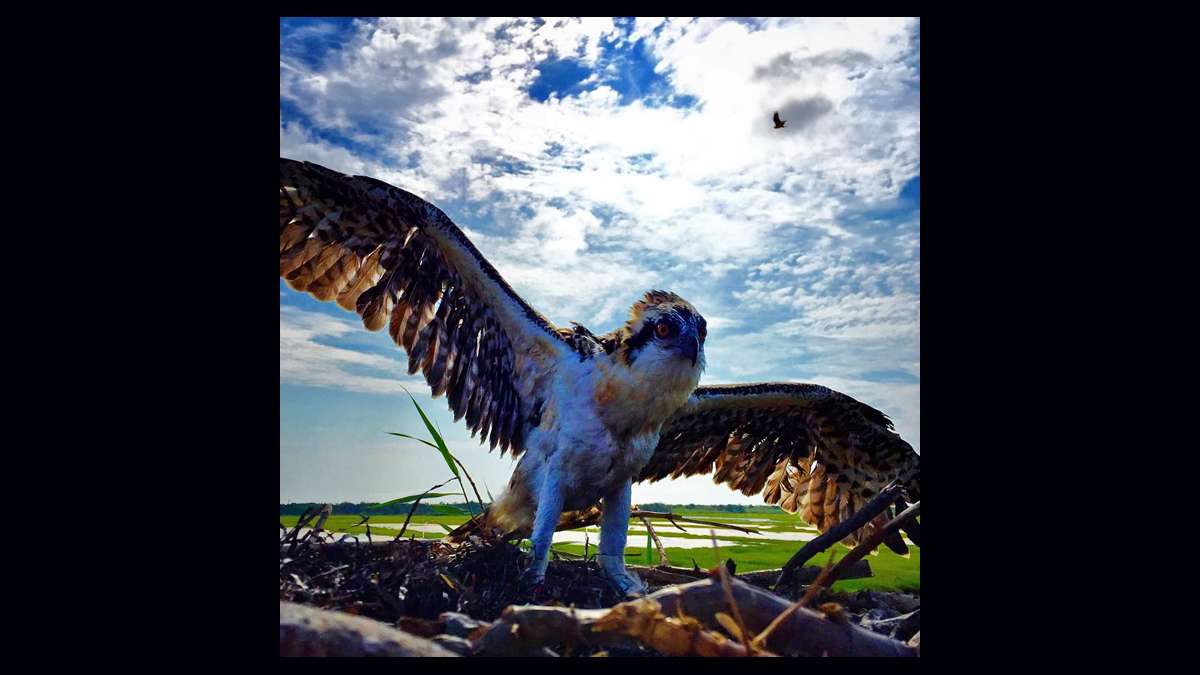
A newly banded nestling and its mother keeping watch above at the Sedge Island Wildlife Management Area in Barnegat Bay. (Justin Auciello for WHYY)
-

-

Another close approach by an osprey while Ben Wurst works in a nest. (Justin Auciello for WHYY)
-
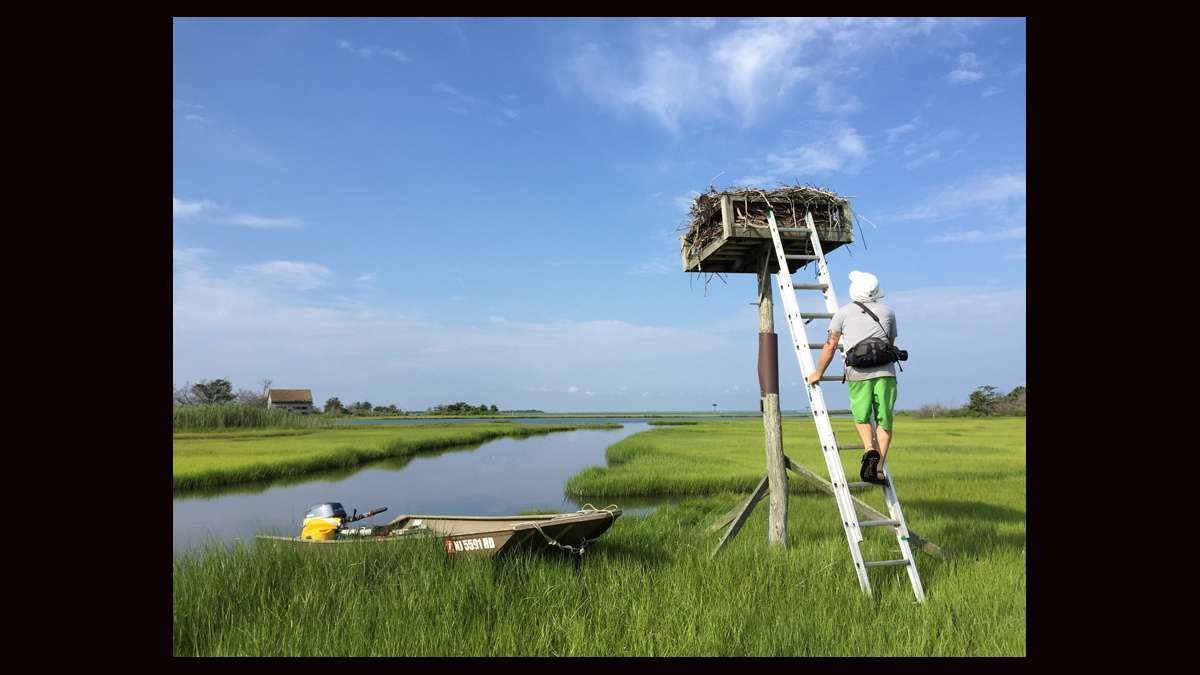
Ben Wurst tagging a chick while the mother osprey passes very close to the nest. (Justin Auciello for WHYY)
-
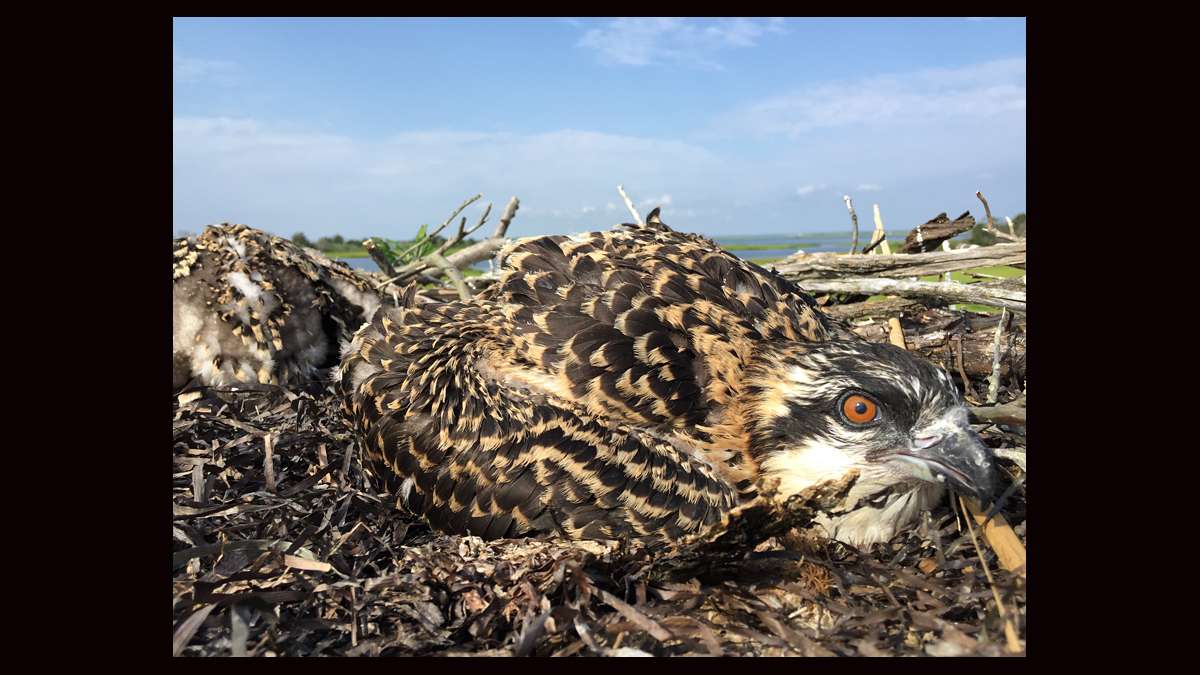
Osprey chicks huddling in the nest. (Justin Auciello for WHYY)
-
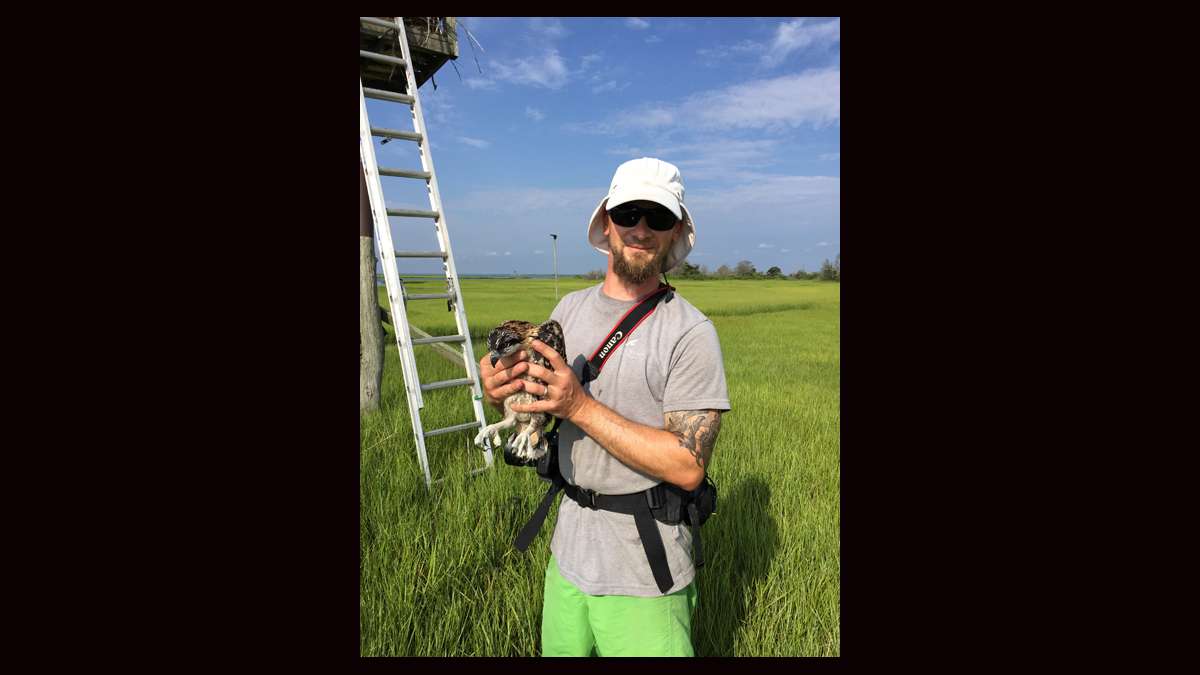
-
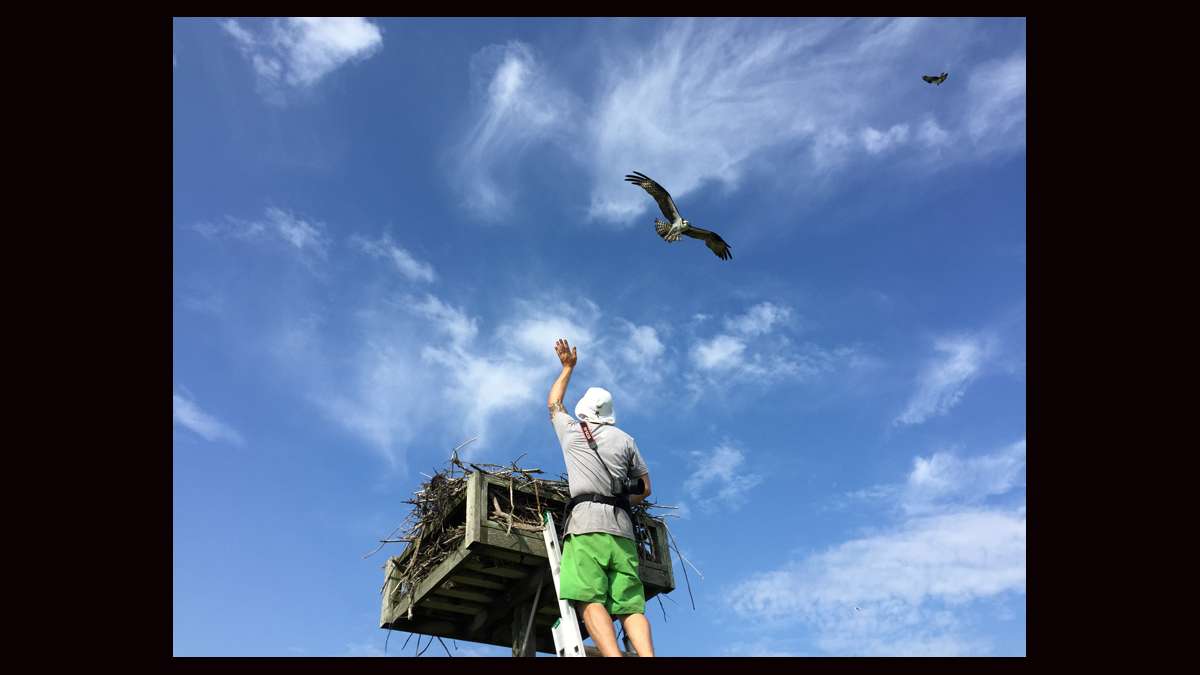
Ben Wurst raises his hand as an osprey approaches the nest. (Justin Auciello for WHYY)
-
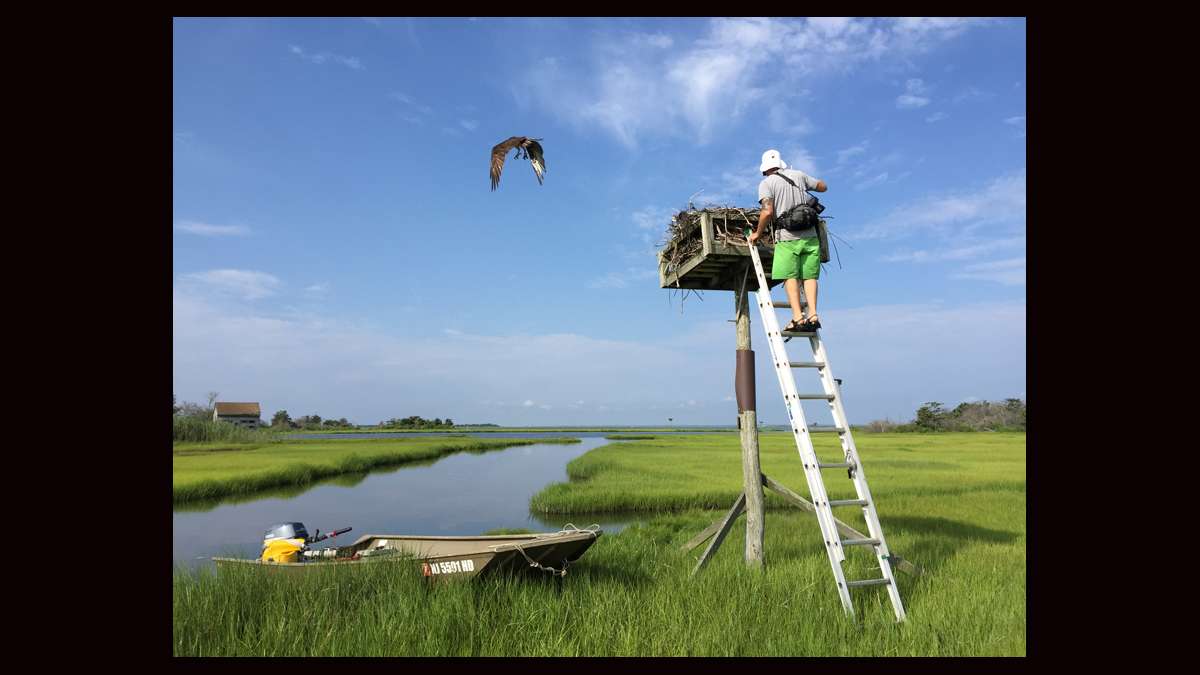
Ben Wurst ready to access an osprey nest. (Justin Auciello for WHYY)
-
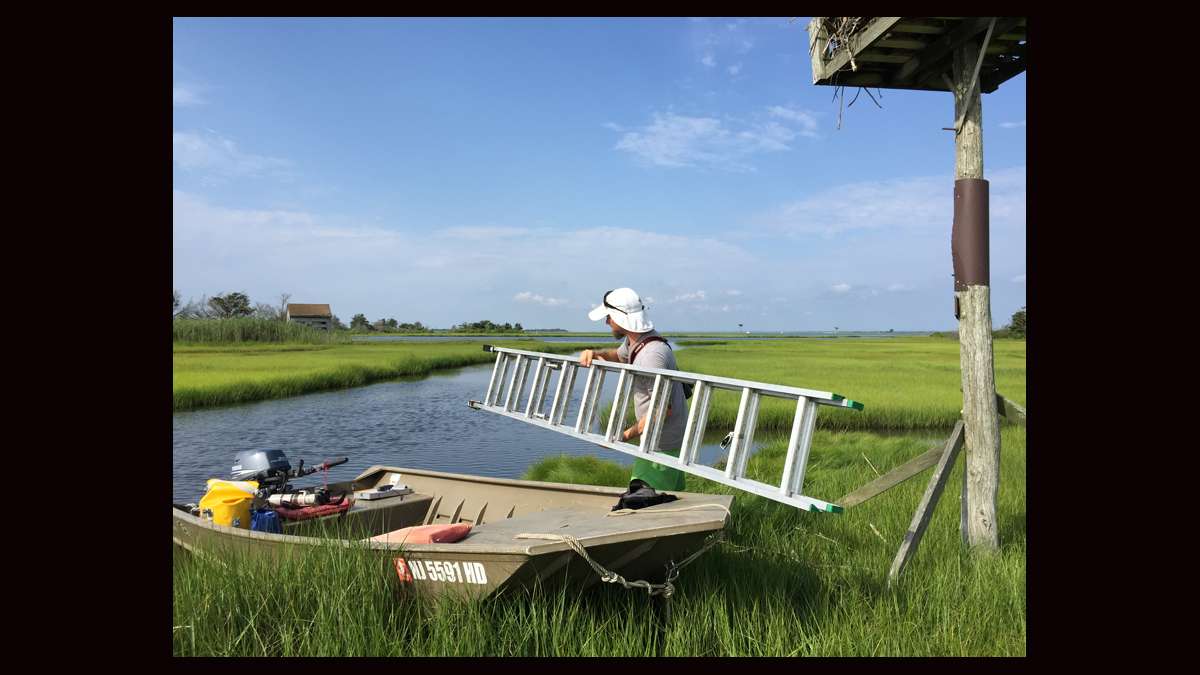
Ben Wurst unloading a ladder from the boat to access an osprey nest. (Justin Auciello for WHYY)
-
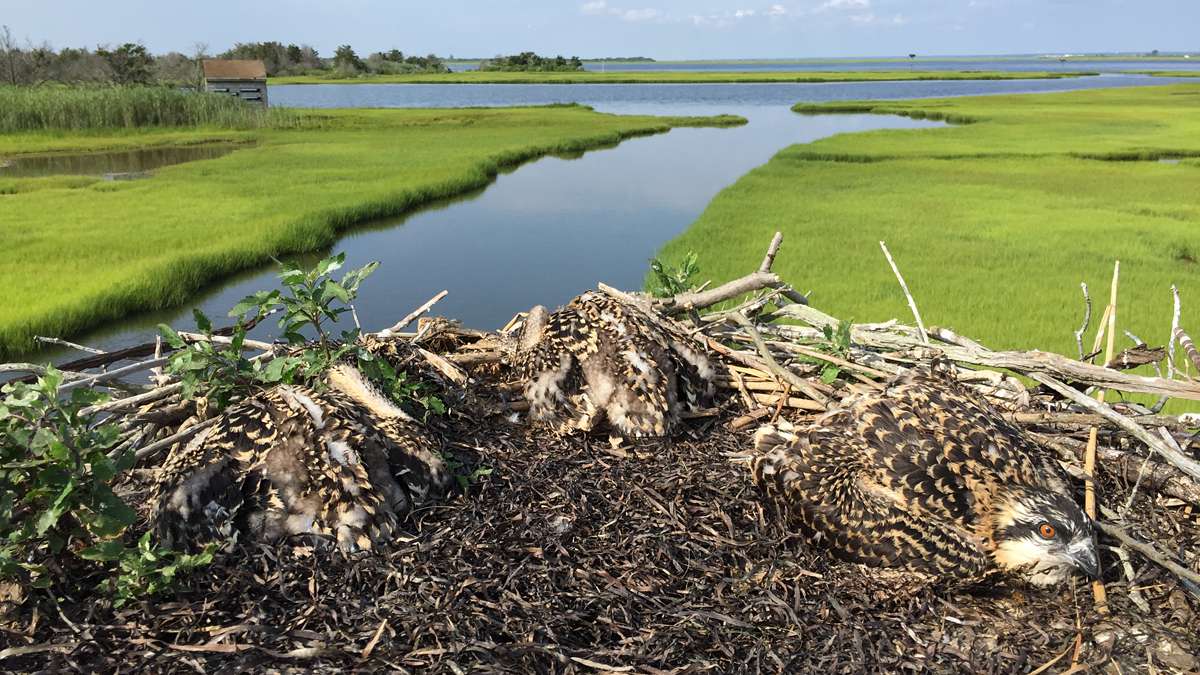
(Justin Auciello for WHYY)
-
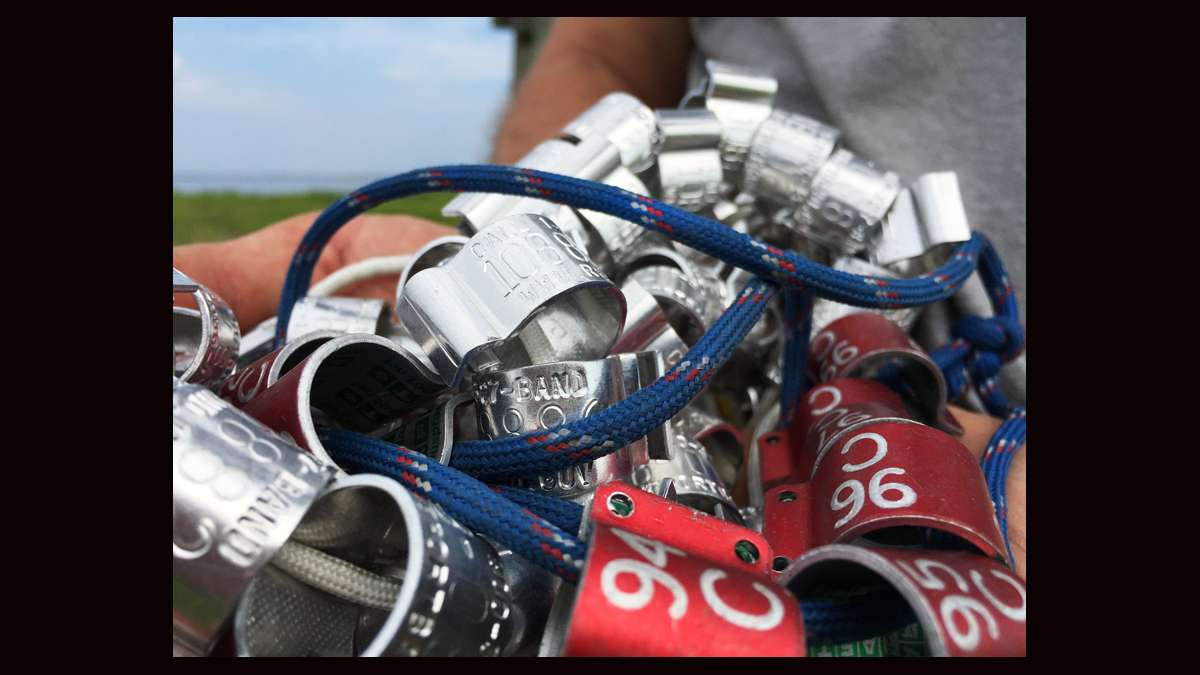
Bands used to identify ospreys. (Justin Auciello for WHYY)
-
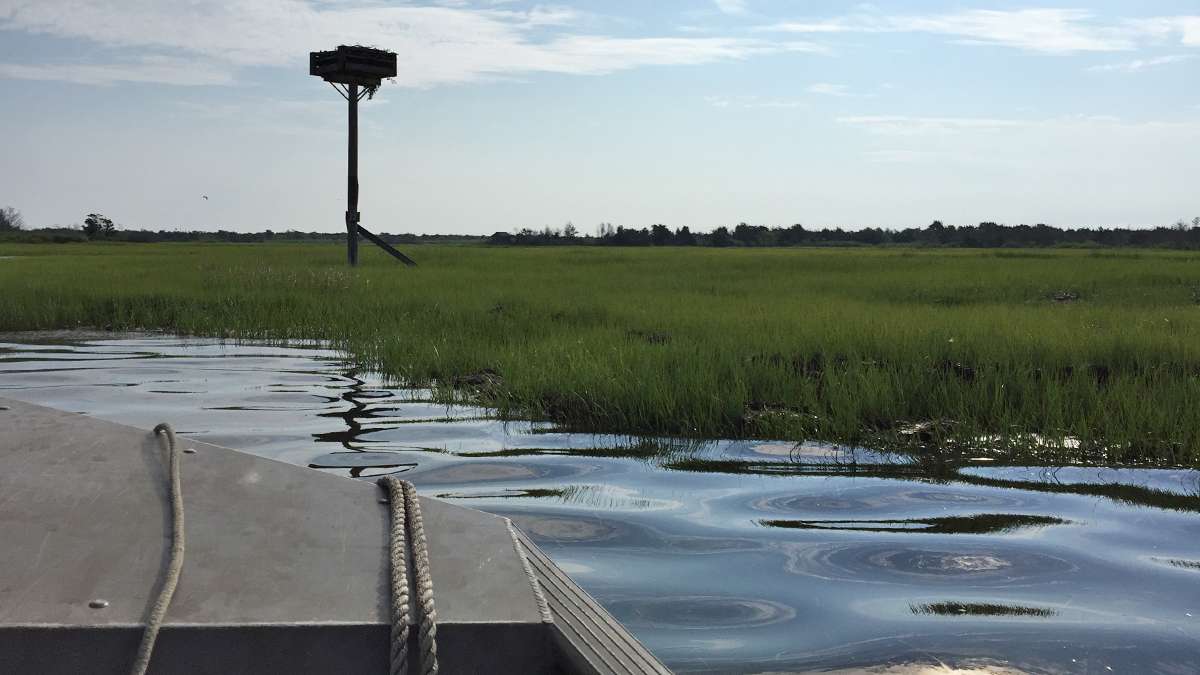
Approaching an osprey nest within Sedges Islands State Wildlife Management Area. (Justin Auciello for WHYY)
-

-
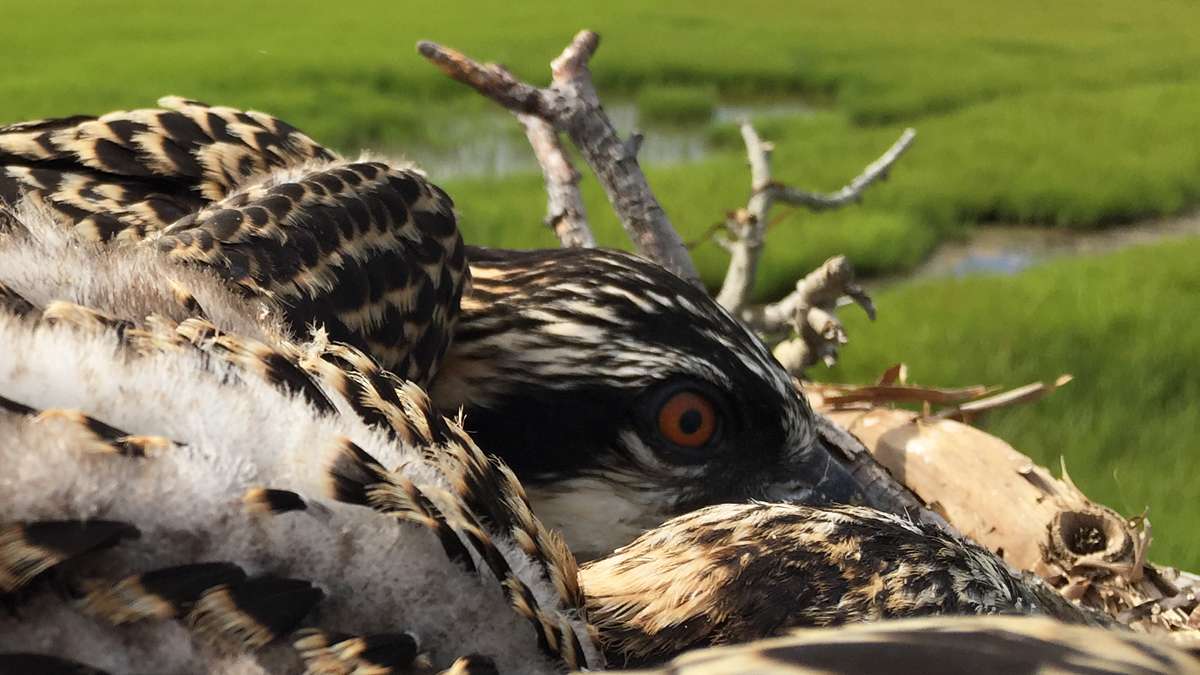
Two osprey chicks huddled together. (Justin Auciello for WHYY)
-
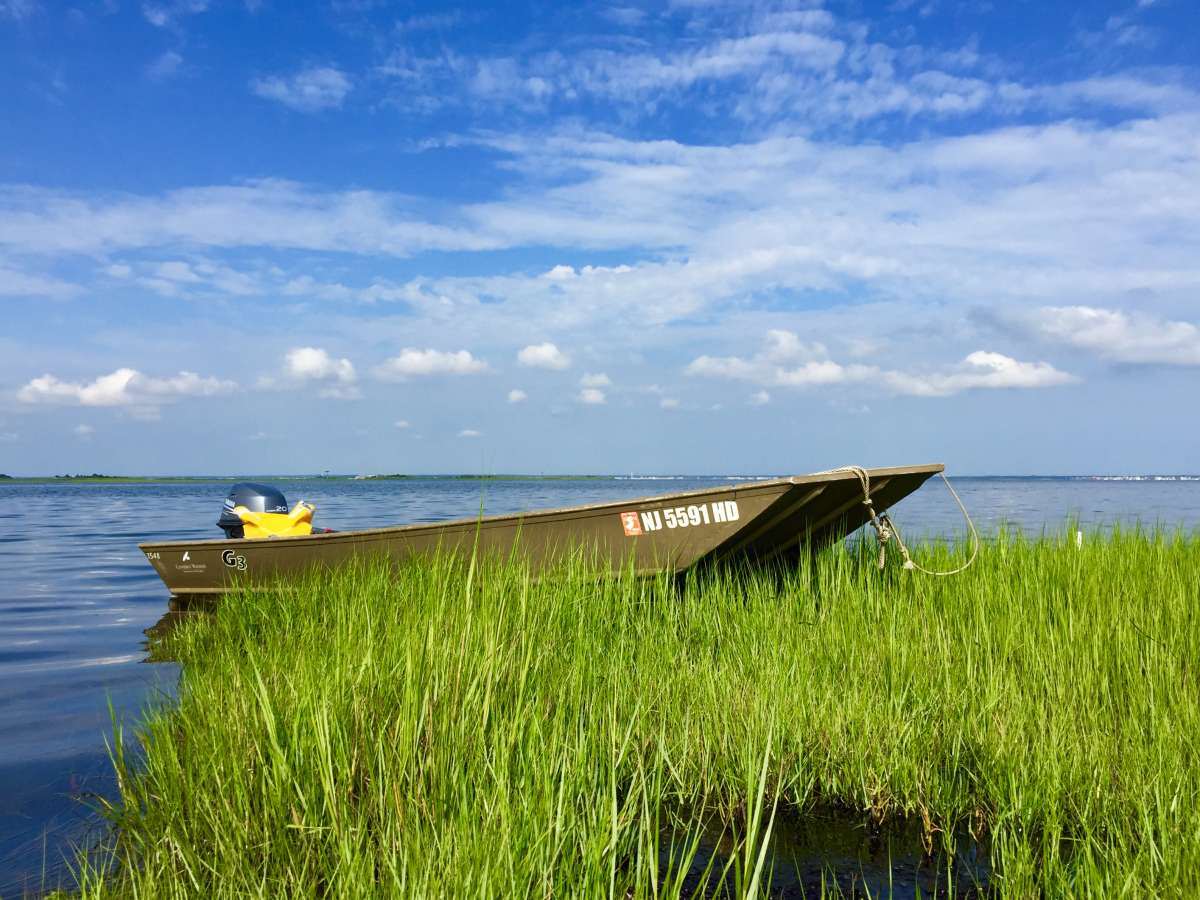
The small boat Ben Wurst uses on his osprey survey and banding missions. (Justin Auciello for WHYY)
-
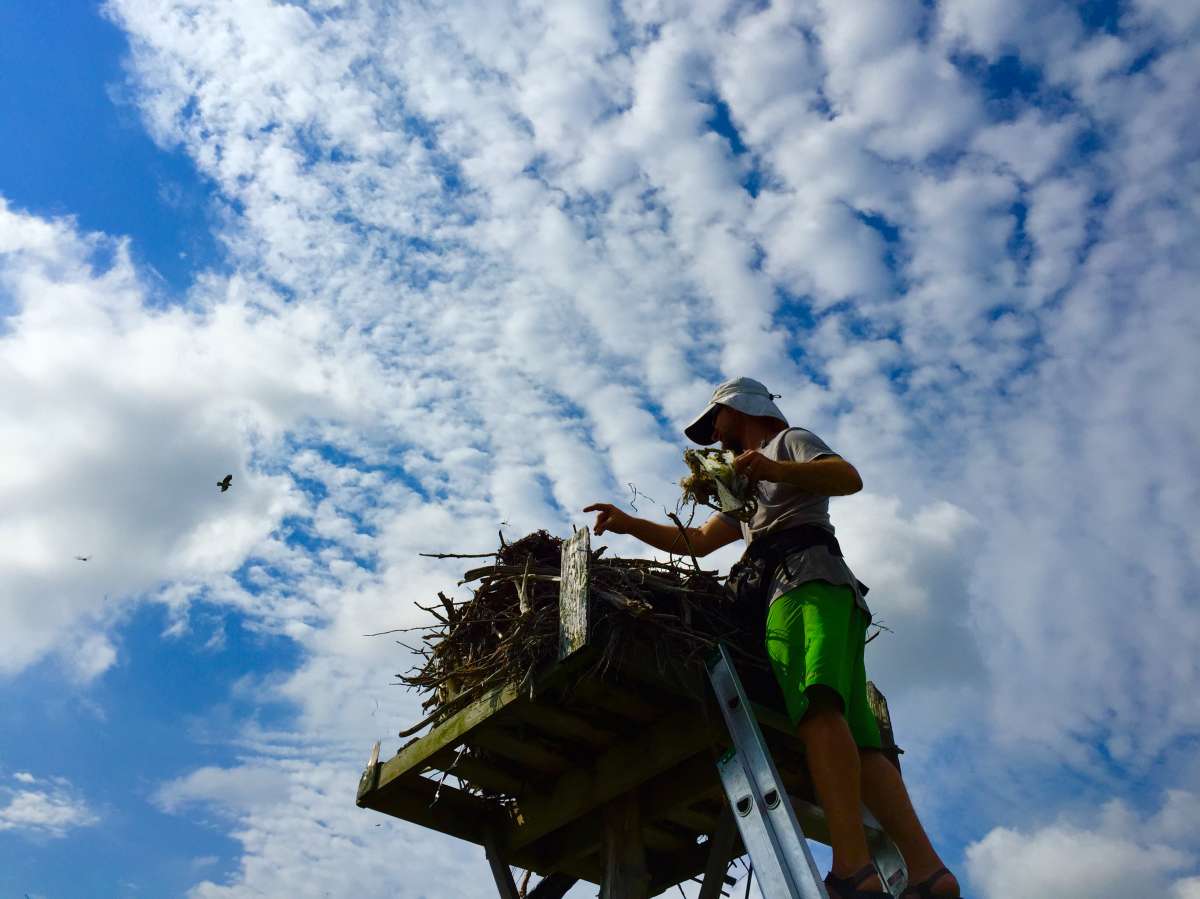
Ben Wurst removing trash from an osprey nest. (Justin Auciello for WHYY)
-
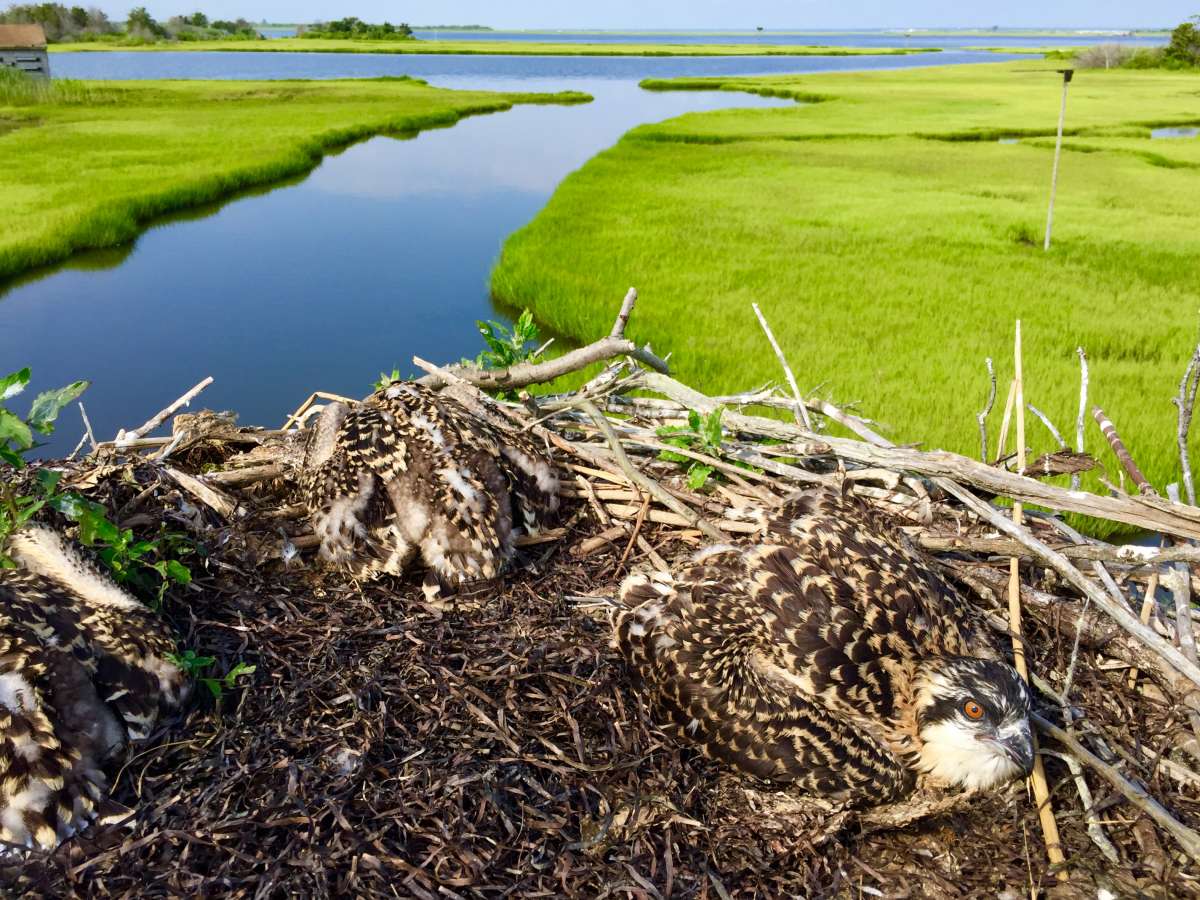
Osprey chicks huddling in the nest. (Justin Auciello for WHYY)
-
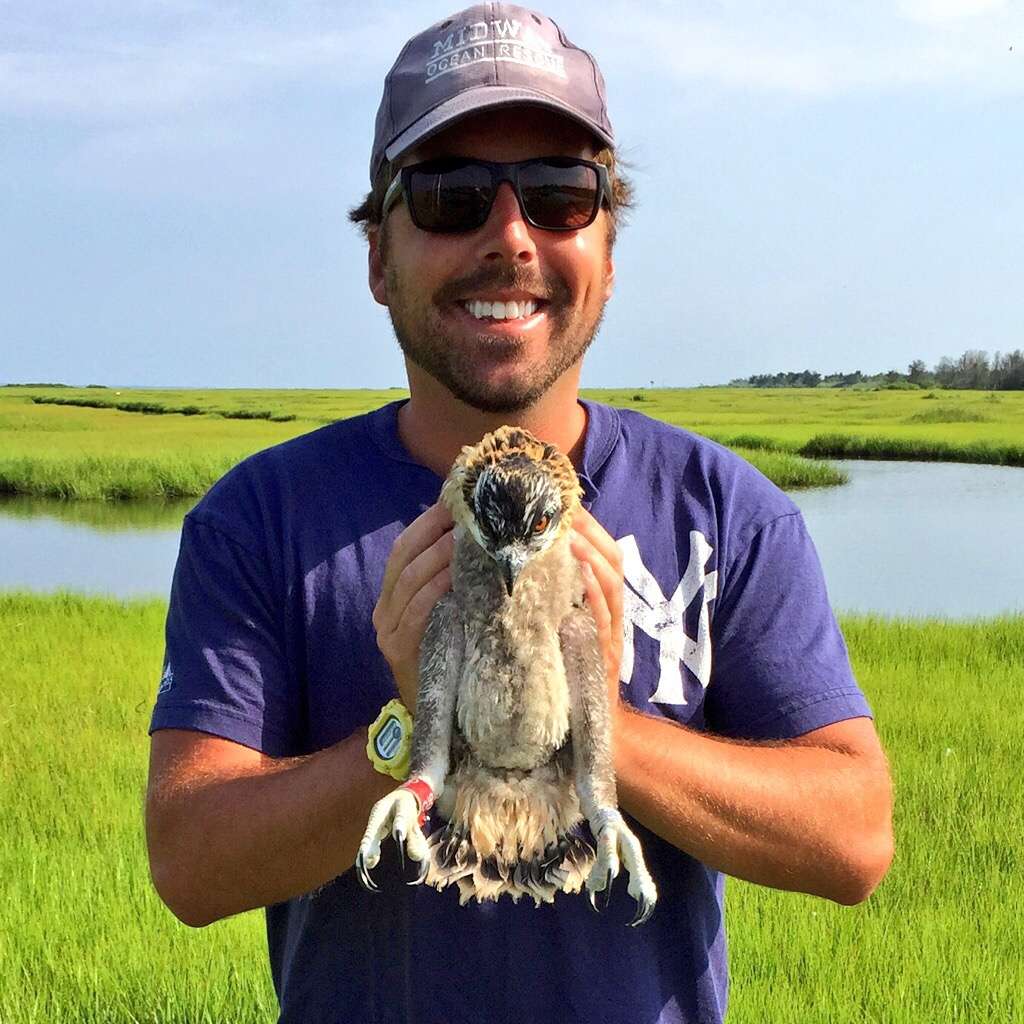
Author Justin Auciello holds an osprey chick. (Photo: Ben Wurst/CWF)
-
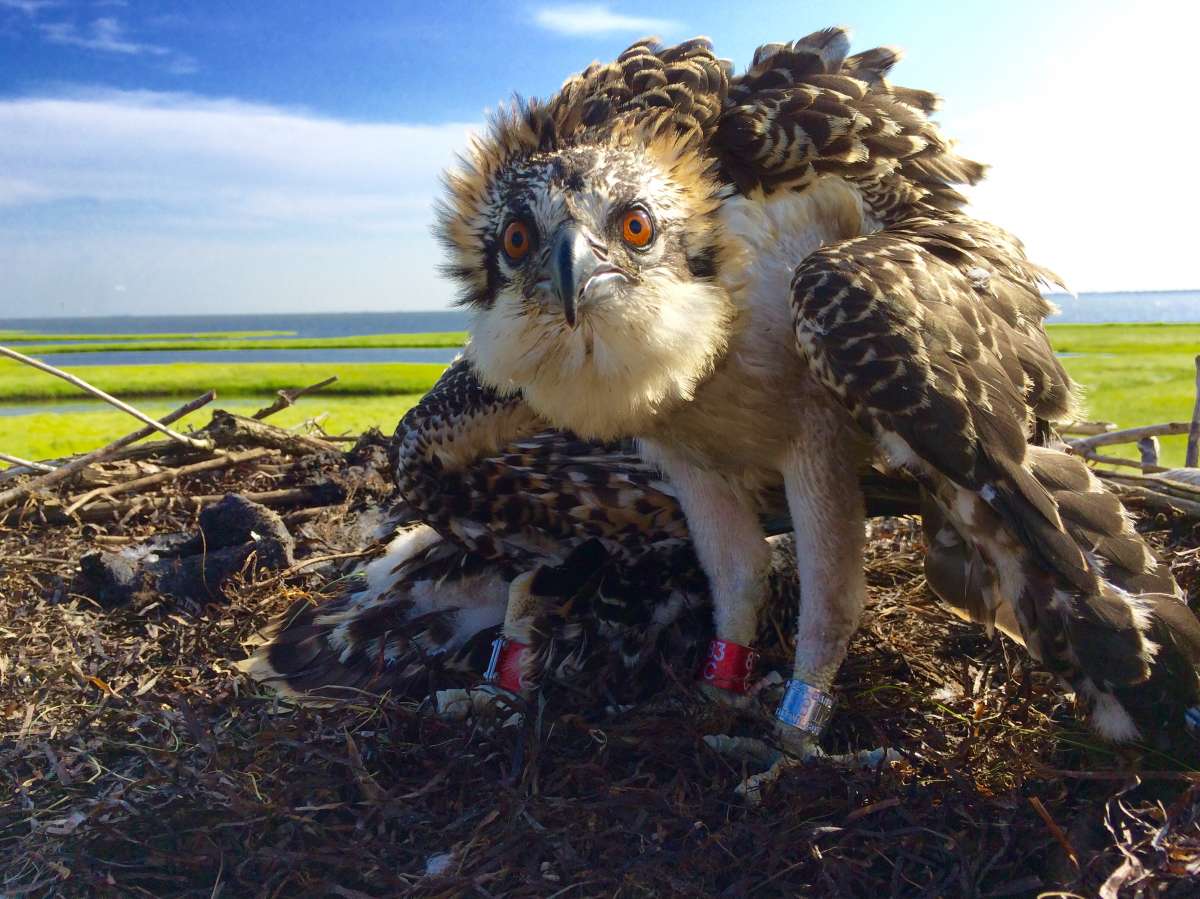
A little teaser of what's to come later in this gallery. This is a curious osprey nestling looking directly into the camera of CWF's Ben Wurst. (Justin Auciello for WHYY)
Welcome home!
It’s that time of the year again when ospreys — the raptors that have staged a miraculous comeback in New Jersey since the early 1970s — migrate north from their wintering grounds in Central America, northern South America, and the Caribbean.
[Related: In Barnegat Bay’s Sedge Islands, ospreys reign]
In recent days, ospreys, also known as fish hawks, were spotted throughout the Jersey Shore. Commenters on the New Jersey Osprey Project Facebook page reported sightings in Oceanville’s Edwin B. Forsythe National Wildlife Refuge, Bayville, Deal, and Island Beach State Park.
Ospreys are typically seen hunting for fish by hovering over tidal waterways, diving downward with talons extended when they spot prey.
In Ocean County’s Island Beach State Park, where an “osprey cam” mounted across the state park’s Interpretive Center has been streaming nest activities since 2012, volunteers have installed the camera equipment for the season just in time.
The camera immediately became a hit, with a community quickly forming and reporting on nest activities in real-time.
The “cam nest” now has an osprey pair, with the first one arriving less than two weeks ago and the second one last Wednesday.
Friends of Island Beach State Park (FOIBSP) Trustee Tim Husar said last year that 80 percent of the equipment installed in 2012 had failed, citing the harsh coastal environment in the state park.
Husar says the organization accepts tax deductible donations to fund equipment purchases and maintenance here.
The Conserve Wildlife Foundation of New Jersey is also offering a livestream of a nest in Oceanville’s Edwin B. Forsythe National Wildlife Refuge. But while it’s streaming at the visitor’s center, New Jersey Osprey Project’s Ben Wurst says, technicians will soon be making adjustments to bring it back for internet viewing.
Highlights of the 2016 Osprey Report, which provides the number of nesting pairs, active nests, and nest productivity for the raptors throughout New Jersey, include 515 active osprey nests.
“Ospreys are an important indicator of the health of our coastal ecosystems, so it is important to track the health of their population. Their continuing recovery is a very promising sign for our estuaries and the fish and other wildlife that depend on clean water to survive,” said CWF Executive Director David Wheeler.
“Today, no visit to a coastal waterfront would be the same without the magnificent sighting of an osprey soaring above or crashing down to the water’s surface for a fish,” he said.
WHYY is your source for fact-based, in-depth journalism and information. As a nonprofit organization, we rely on financial support from readers like you. Please give today.

